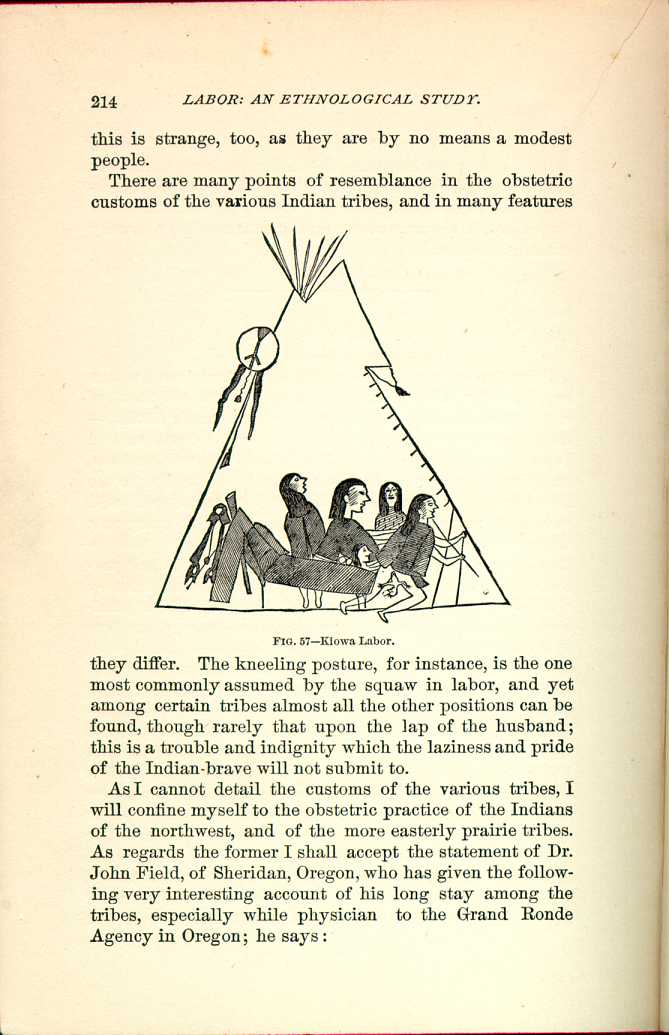| CHAPTER V.
CHARACTERISTIC LABOR SCENES AMONG THE
YELLOW, BLACK AND RED RACES. Labor Among Primitive Peoples | ||
Primitive customs among our North American Indians are rapidly disappearing. As the war-bonnet of eagle plumes has given way to the unromantic felt hat— the tomahawk and bow and arrow to the revolver and breech-loading rifle—so are the original obstetric customs, traditionary among the red people for ages, yielding to the influence of civilization: the few warlike tribes, who still retain the ways of their ancestors, are rapidly dying out; those who have quietly settled down upon the reservation are accepting the habits of the whites, and their parturient squaws are delivered as they have been taught by the agency-physician or the army-surgeon; in fact, primitive obstetric customs are so speedily passing away that more than one of the agency-physicians answered with some surprise to the circular, kindly sent among them, for me, by the Smithsonian Institute, that he had observed nothing peculiar; that the squaws of the tribe were delivered on the back, and their habits were the same as those of their white sisters. Many of the tribes, nevertheless, still retain their peculiar customs, but all of my informants unite in the statement that it is very difficult to obtain any information from them upon these points. It is rare that men are permitted to witness, or even be near a labor scene; and white physicians are not called in unless it be a desperate case. Indians are moreover very reticent upon this point and very unwilling to impart any information regarding their women or the functions peculiar to them;
There are many points of resemblance in the obstetric
customs of the various Indian tribes, and in many features

FIG. 57—Kiowa Labor.
[Description: Four persons in a tepee assist in childbirth. Stylized black
and white illustration.]
As I cannot detail the customs of the various tribes, will confine myself to the obstetric practice of the Indians of the northwest, and of the more easterly prairie tribes. As regards the former I shall accept the statement of Dr. John Field, of Sheridan, Oregon, who has given the following very interesting account of his long stay among the tribes, especially while physician to the Grand Ronde Agency in Oregon; he says:
| CHAPTER V.
CHARACTERISTIC LABOR SCENES AMONG THE
YELLOW, BLACK AND RED RACES. Labor Among Primitive Peoples | ||